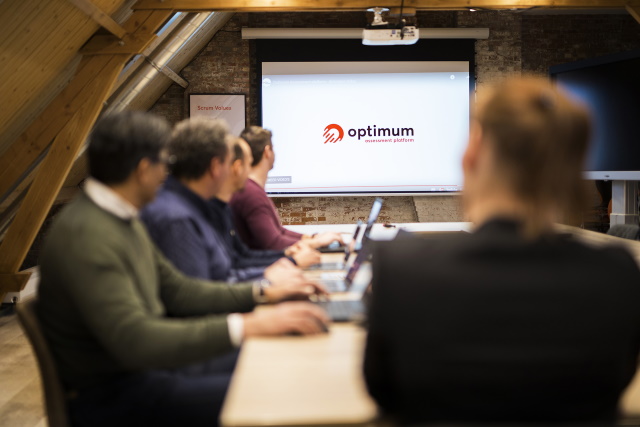As an employer, you want to know how your employees are developing. With testing, you make this development transparent. But review provides much more than insight alone. Get inspired and discover the importance of the ultimate testing experience.

Several factors come into play in that ultimate testing experience. Consider ease of use, security and reliability. The ease of use applies to the exam candidate, but also to the testing organization.
For the candidate, taking the test should be as enjoyable as possible. The organization benefits if the entire process from development to analysis is as smooth as possible. But it’s not just the ease and speed with which you can develop a test that weighs heavily; a grip on the quality of the tests is also important.
In addition, safety and reliability play an important role. Not only during the taking, think about stopping exam fraud, but also the reliability of the system itself. For example, it is very important that all data is stored in a secure manner.
Testing often brings with it a sense of “necessary evil. For many candidates, it feels like an obligation to prepare for and pass a test. However, the challenge is to get candidates to perceive it as an opportunity that provides the opportunity to show what you have to offer.
In view of the rapid changes in the labor market, testing is very interesting. People no longer work for forty years with the same employer. Test results give a new employer insight into the competencies of (new) employees and can also serve as proof in external company certifications.
Also at play in many organizations is the sense of obligation surrounding tests. If you as an organization decide to test, there is more to it than putting together a one-time test. You need to offer employees the opportunity to brush up on their knowledge, find a test location, as well as provide current test questions that match the content. The trick is to remove the (negative) sense of obligation from all parties involved and emphasize the benefits that make testing fun.

Making keys fun sounds like a challenge, but it’s doable. Always keep the purpose of the test in mind. This largely determines what the test will look like, what kind of questions you will use, etcetera. Are you testing to maintain certification or want to see if your employees’ knowledge is up to date? Or does the HR department use the test to gain insight into who qualifies for training or courses?
“For knowledge tests, multiple choice or closed questions are very appropriate. A great example in the retail industry is testing employees’ knowledge of the latest product information, with a regularly changing assortment.
At the same time, it may also be important for a retailer to test just a bit more on social skills. How do employees respond to a difficult customer in the store? For example, to test such things as behavior, use an open-ended question or a video assignment.
When choosing the type of key, it is very important to consider the
ease of use
of the candidate in mind. For example, it is encouraging when candidates can choose when and where to take the test. At their workplace, or just at home in the evenings. That brings a lot less tension. By using intuitive software, candidates can focus entirely on the content and are not distracted by ambiguities in the testing system. In addition, participants can manage their own settings, such as font size and background color. In terms of content, of course, a test must also perfectly match a candidate’s material and work.
In contrast, for a testing organization, ease of use is much more in being able to easily design tests. Other pluses include reliable monitoring and efficient ways for review. Good, clear reporting and analysis capabilities are also important. On top of that, everyone involved in the test, such as teachers, proofreaders and freelancers, should be able to use the system easily.
Over €3 billion is spent annually on training among employed people [SEO, 2018]. They often involve training for groups of employees. This can act as a shotgun. It is efficient in terms of organization but there are also people among them who do not actually need the training.
By better understanding who has what training needs, you can use the training budget much more effectively. This saves employees time and-not unimportantly-for the employer costs. By testing, you as a company have more control over the development of your employees.
Testing is a great way to demonstrate the ROI of education and training. Don’t immediately think of extensive exams, you can also use it quickly and briefly if you just want to check how you are doing. This also allows you to be more efficient with your training budget so especially for R&D and HR departments in business this is interesting. They can better demonstrate where additional knowledge and training is needed.
Wondering how to achieve the ultimate testing experience for your organization?